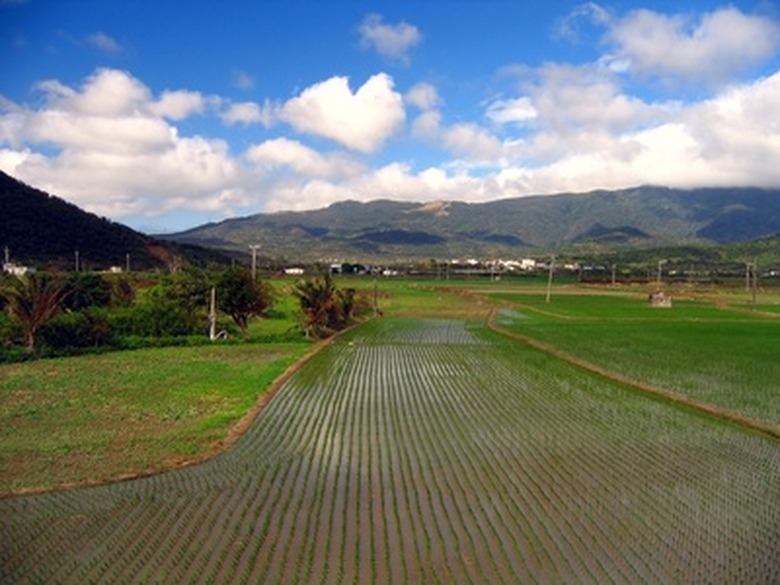What Is The Effect Of Fertilizer On Plant Growth?
Plants need some combination of 16 nutrients to grow properly. Not all locations or soil types provide all the nutrients, all the time. Fertilizer is used to add or replace nutrients that are deficient in the soil. Some fertilizers are organic, some inorganic, some general and some specialized. General fertilizer provides the three most commonly needed nutrients: nitrogen, potassium and phosphorus, or N-P-K.
Nitrogen
Nitrogen is the most widely used and most frequently needed nutrient. It is designated by the N value on fertilizer labels. Nitrogen promotes growth of foliage. Lush, leafy plants have a good supply of nitrogen. Nitrogen is water soluble and can easily leach out of the soil. Signs of nitrogen deficiency are spindly stems, yellowed, wilted leaves and stunted plant growth. Natural sources of nitrogen can be found in dairy or poultry manure, grass and legume hay and fish meal.
- Plants need some combination of 16 nutrients to grow properly.
- Natural sources of nitrogen can be found in dairy or poultry manure, grass and legume hay and fish meal.
Potassium
Potassium, also called potash, is designated by the K value on fertilizer labels. It is an essential part of the photosynthesis process because it helps plants control water absorption. Without potassium, roots do not develop well, and stems are weak. Leaves of older plants may appear scorched around the edges, as water is not used efficiently. Organic sources of potassium include compost that contains plenty of banana peels, hardwood ashes, kelp meal and green sand.
Phosphorus
Phosphorus is designated by the P value on fertilizer labels. It has several purposes pertaining to plant growth. It aids in photosynthesis, helps plants use water efficiently, helps plants respire or expel excess water and helps them move and store energy. Without phosphorus, roots and young plants grow poorly, and fruit and vegetable production decreases. Bone meal is an excellent source of phosphorus.
- Potassium, also called potash, is designated by the K value on fertilizer labels.
- Organic sources of potassium include compost that contains plenty of banana peels, hardwood ashes, kelp meal and green sand.
Excessive Fertilizer Effects
Too much nitrogen can cause plants to flourish with rapid growth and an abundance of foliage. However, it can inhibit fruit or flower production. Also, the rapid growth can cause a need for more frequent watering, which in dry spells and droughts may be problematic. Phosphorus and potassium are so hard to come by for plants that it is virtually impossible for them to receive too much. However, excessive phosphorus is a source of water pollution. It is easily washed away during rain and reaches streams, rivers and other groundwater supplies affecting aquatic and wildlife as well as drinking water for humans.
Determining Needs
Soil tests can determine exactly which nutrients are deficient, if any. This allows the gardener to develop a customized fertilization plan that takes into account not only the soil deficiencies but also the nutrient needs of the vegetation that will be planted there. Once that is established, the proper general fertilizer and any additional soil amendments can be chosen and safely applied to provide the best growth potential for the plants growing there.
- Too much nitrogen can cause plants to flourish with rapid growth and an abundance of foliage.
- This allows the gardener to develop a customized fertilization plan that takes into account not only the soil deficiencies but also the nutrient needs of the vegetation that will be planted there.
